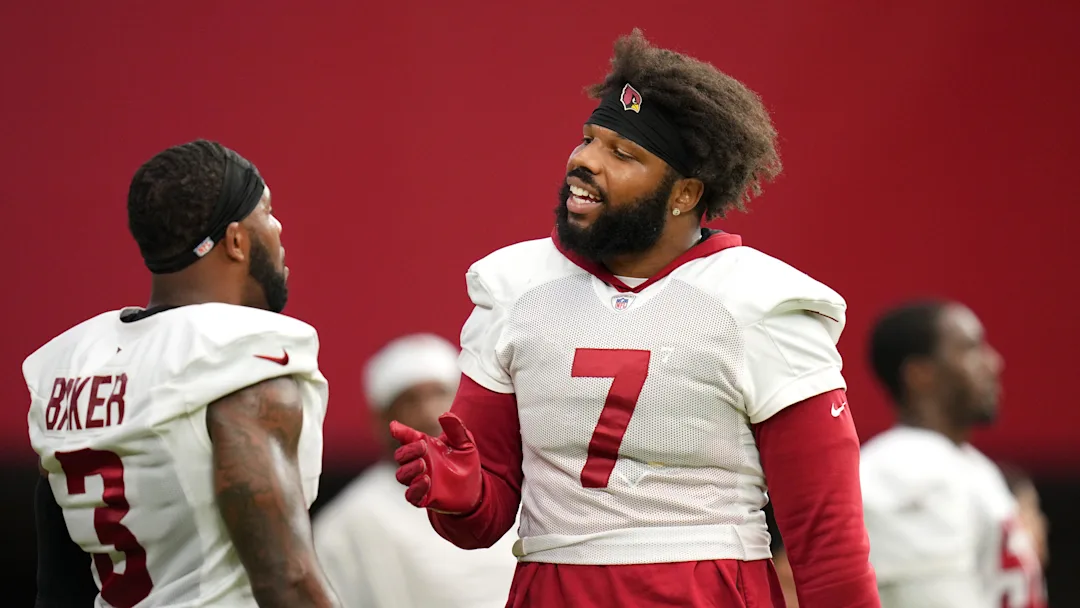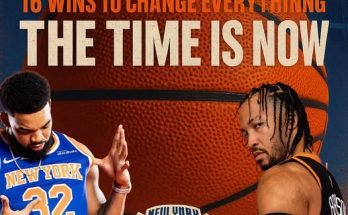The Tennessee Titans find themselves in a pivotal transitional phase—a team shedding some of its past identity while trying to carve out a new one under head coach Brian Callahan. As the organization eyes a return to playoff contention, building a complete, competitive roster is priority number one. Among the options that make too much sense to ignore is a veteran currently rostered by the Arizona Cardinals—someone whose experience, skill set, and football IQ could seamlessly align with Tennessee’s ambitions. In the chaotic, often unpredictable world of NFL personnel moves, some fits are just too natural to overlook, and this one feels tailor-made.
The player in question? None other than Cardinals offensive tackle D.J. Humphries. The 30-year-old veteran has been a model of consistency and leadership on the left side of Arizona’s line since being drafted in the first round of the 2015 NFL Draft. Though currently working his way back from a torn ACL, Humphries’ pedigree, durability prior to injury, and locker room presence would instantly upgrade the Titans’ offensive line room—a group that has struggled mightily in recent years to provide both protection for the quarterback and run lanes for the backfield.
For Tennessee, the offensive line has been a chronic concern. The franchise has watched key starters decline or leave in free agency, and while young talent like 2023 first-round pick Peter Skoronski offers promise, there’s still a desperate need for veteran steadiness. Dillard was a disappointment, and the right tackle spot has been a revolving door. The left tackle position—arguably the most vital spot on the line—has been inconsistent at best and catastrophic at worst. Adding someone like Humphries, even on a short-term deal, would be akin to plugging a major leak before it sinks the entire ship.
There’s also the culture factor. D.J. Humphries is known across the league as a vocal leader and mentor, especially to younger linemen. He has seen the highs and lows of NFL life, battling through injuries and regime changes while maintaining a high level of professionalism. That sort of presence would be invaluable in a Tennessee locker room currently undergoing generational turnover. With Ryan Tannehill gone, Derrick Henry now a member of the Baltimore Ravens, and young quarterback Will Levis stepping into the spotlight, veteran leadership is no longer a luxury—it’s a necessity.
Levis, in particular, stands to benefit immensely from having a seasoned left tackle watching his blindside. Rookie quarterbacks, or those in their first full season starting, often struggle behind shaky offensive lines. Just ask Justin Fields or Zach Wilson about how developmental arcs can go off track with poor protection. Giving Levis the time he needs to read defenses and grow into the role of franchise quarterback is essential to Tennessee’s long-term plans. Humphries, when healthy, is more than capable of offering that security blanket.
Financially, the Titans are in a favorable position. After a few strategic cuts and free agent signings, the team still has the cap flexibility to bring in a veteran like Humphries without jeopardizing future commitments. And because he’s returning from injury and nearing the tail end of his career, the price tag wouldn’t break the bank. A one-year or two-year deal with team-friendly structure and incentives tied to games played or snap counts could make this a win-win scenario. Humphries gets to prove he’s still got it; the Titans get a stabilizing force at a critical position.
The Cardinals, for their part, are in the midst of a long-term rebuild. With quarterback Kyler Murray back and a slew of draft picks entering the fold, Arizona is clearly focused on youth. They’ve already begun reshaping their offensive line and may see moving on from Humphries—especially given the injury—as a way to accelerate that process. Trading or releasing a veteran to make room for developmental players isn’t uncommon during these phases, and the Titans should be ready to pounce if such an opportunity arises.
Moreover, the schematic fit works. New offensive coordinator Nick Holz brings with him a system that values balanced line play and physicality in the trenches. Humphries has thrived in similar systems in Arizona, where he’s been tasked with both protecting a mobile quarterback and helping pave the way for the run game. His versatility and experience with multiple offensive schemes make him a plug-and-play candidate, reducing the learning curve and making an immediate impact feasible.
Let’s not forget the AFC South landscape, either. With the Jacksonville Jaguars, Indianapolis Colts, and Houston Texans all fielding competitive young rosters, the margin for error is razor-thin. Tennessee cannot afford to leave any major position group vulnerable, especially not one as foundational as the offensive line. Bolstering the left tackle spot with a proven vet gives the Titans a fighting chance in divisional matchups that could determine playoff eligibility.
On paper, Tennessee already made several smart offseason moves. The additions of wide receiver Calvin Ridley and running back Tony Pollard indicate a shift toward a more dynamic, modern offense. But those skill players are only as good as the protection in front of them. If the Titans are serious about maximizing their offensive output, especially with a young quarterback under center, then prioritizing line stability is the logical next step. And no one available fits that bill better than Humphries.
There’s a reason teams often turn to veterans as the final piece of the puzzle. Younger players can bring explosiveness and potential, but there’s no substitute for experience when the pressure is on and the stakes are high. Humphries has been through playoff chases, endured tough seasons, and knows how to manage both victory and adversity. He doesn’t just bring talent—he brings perspective. That could be just as vital as any physical trait he offers.
While the Titans could certainly roll the dice on younger, cheaper linemen or hope their current group gels, that’s a high-risk strategy that history shows rarely works out. Tennessee fans have endured one too many seasons of watching the quarterback get sacked repeatedly and drives stall because of backfield pressure. Fixing that now, before it becomes a mid-season headline, is the kind of proactive move smart franchises make.
To be clear, Humphries wouldn’t be a long-term fix—he’s not going to be the franchise cornerstone at tackle for the next five years. But that’s not what Tennessee needs right now. They need a bridge. Someone to help usher in a new offensive era, protect a budding quarterback, and instill a sense of discipline and unity in the trenches. For all those reasons and more, he makes too much sense for the Titans to ignore.
In a league where fit, timing, and opportunity mean everything, this potential pairing checks every box. The Titans need stability; Humphries offers it. The Titans need leadership; Humphries lives it. The Titans need protection for their young star; Humphries provides it. It’s not always easy to find solutions in the NFL, but when one is staring you in the face, the best move is to act.
If Tennessee wants to compete, wants to build around Levis, and wants to make 2025 a statement year, then bringing in D.J. Humphries should be a priority. Because in the high-stakes game of roster building, sometimes the perfect fit is right in front of you—and this one couldn’t be clearer.



